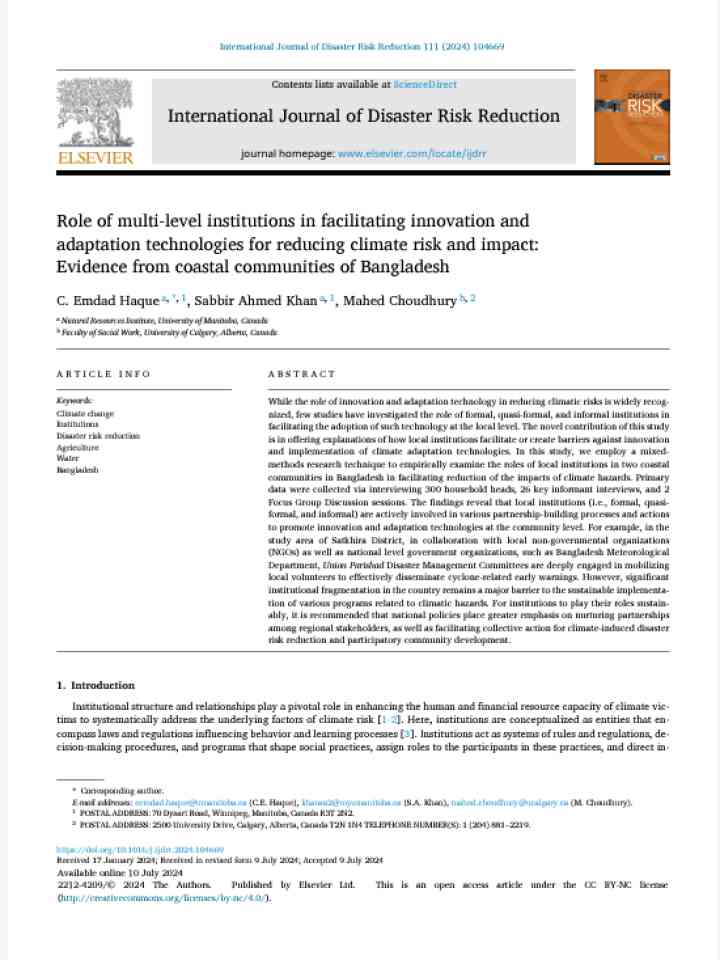Role of multi-level institutions in facilitating innovation and adaptation technologies for reducing climate risk and impact: Evidence from coastal communities of Bangladesh
The novel contribution of this study is in offering explanations of how local institutions facilitate or create barriers against innovation and implementation of climate adaptation technologies. Institutional structure and relationships play a pivotal role in enhancing the human and financial resource capacity of climate victims to systematically address the underlying factors of climate risk
The findings reveal that local institutions (i.e., formal, quasi-formal, and informal) are actively involved in various partnership-building processes and actions to promote innovation and adaptation technologies at the community level. For example, in the study area of Satkhira District, in collaboration with local non-governmental organizations (NGOs) as well as national level government organizations, such as Bangladesh Meteorological Department, Union Parishad Disaster Management Committees are deeply engaged in mobilizing local volunteers to effectively disseminate cyclone-related early warnings.
Explore further
